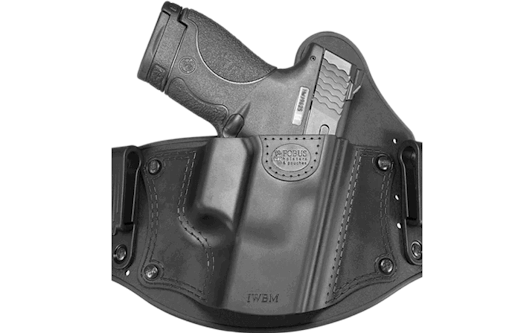For anyone who carries a firearm regularly, comfort, accessibility, and concealment are paramount. This is where IWB holsters, or inside—the—waistband holsters, come into play. Designed to tuck your weapon securely inside your pants, these holsters provide an effective solution for discreet carry while maintaining quick access. But with so many options on the market, how do you choose the right IWB holsters to fit your lifestyle and firearm?
In this comprehensive guide, we’ll break down everything you need to know about IWB holsters, compare them to open carry holsters, and share expert tips on finding a holster that balances safety, comfort, and concealment.
What Are IWB Holsters?
IWB holsters are designed to hold your firearm inside the waistband of your pants. This positioning makes them one of the best choices for concealed carry because the firearm is hidden beneath your clothing while remaining accessible. Unlike open-carry holsters, which are worn outside clothing and are more visible, IWB holsters prioritize discretion.
The typical inside-waistband holster utilizes a clip or loop to secure the holster to your belt or waistband, ensuring stability while you move. Their popularity continues to rise due to the balance they offer between concealment and ease of draw.
Why Choose IWB Holsters Over Open Carry Holsters?
When considering a holster, the choice often boils down to how visible you want your firearm to be and the context in which you carry. Open-carry holsters are excellent for law enforcement personnel, security professionals, or individuals in states where open carry is legal and accepted. They provide fast access and comfort, but are far less discreet.
On the other hand, IWB holsters cater to everyday carriers who prioritize concealment. If you want to keep your firearm private while still having quick access, an inside waistband holster is the way to go.
Factors to Consider When Choosing IWB Holsters
Selecting the ideal IWB holster requires several key considerations. Here are the main factors to evaluate before making your decision:
Fit and Compatibility
Not all IWB holsters fit every firearm model. Ensure the holster you choose is designed specifically for your gun’s make and model. This guarantees a secure fit and proper retention, preventing the weapon from moving or accidentally falling out.
Some holsters offer adjustable retention screws to customize the grip on your firearm, allowing for a balance between security and quick draw.
Comfort and Concealment
Since inside-the-waistband holsters sit close to your body, comfort is crucial, especially if you carry for extended periods. Look for holsters with sweat guards to prevent irritation and designs that evenly distribute pressure.
Consider the thickness of your holster and how well it conceals under your typical clothing. Slim profiles and adjustable cant (the angle at which the holster holds your gun) can make a huge difference in concealment and ease of draw.
Carry Position
Where you position your IWB holster on your waistband impacts concealment and draw speed. Common positions include:
- Appendix carry (front of waistband)
- Strong side (3 o’clock for right-handed shooters)
- Behind the hip (4-5 o’clock)
Try different positions to find what suits your body type and daily activities. Some holsters offer adjustable clips or mounts for flexibility.
Retention and Security
A good holster must securely hold your firearm during movement but allow a smooth draw when needed. Be sure to look for features such as adjustable retention screws, passive retention systems, and thumb breaks. A holster without proper retention risks dropping your weapon or compromising safety during active movement.
Ease of Use
Your IWB holster should enable you to draw your weapon quickly when necessary. Avoid holsters that require complicated maneuvers or extra time to unclip or unsnap. Practice drawing with your chosen holster before making a commitment.
Final Thoughts
Choosing the perfect IWB holsters requires balancing comfort, concealment, retention, and usability. Whether you’re a beginner or a seasoned carrier, understanding the different materials, carry positions, and retention systems helps you make an informed decision. If you prioritize discreet everyday carry, inside waistband holsters are unmatched in providing concealment without sacrificing access. While open carry holsters serve their purpose in specific scenarios, the versatility and privacy of IWB holsters make them the preferred choice for most concealed carriers.
